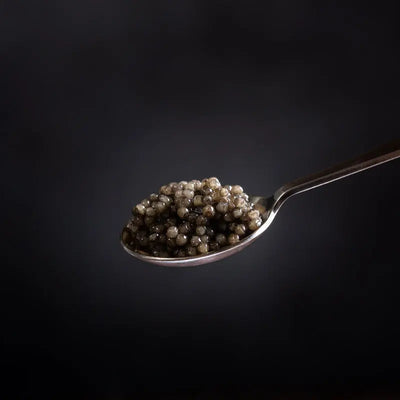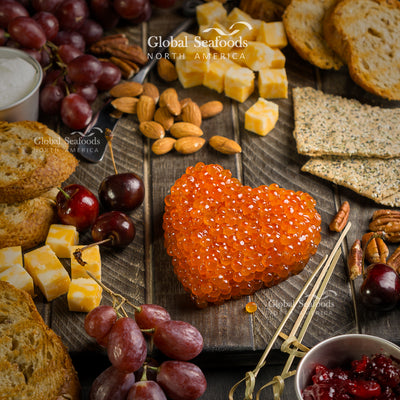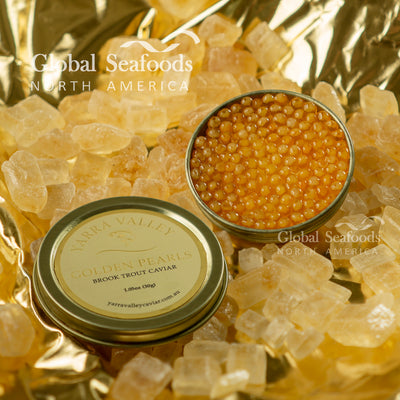San Francisco Caviar: A Culinary Journey
San Francisco is a haven for food lovers, and its reputation for offering world-class caviar is no exception. Whether you’re savoring this delicacy at a high-end restaurant or bringing the luxury home, the Bay Area provides unparalleled options for indulging in this elegant treat.
From the buttery richness of Kaluga caviar to the nutty notes of Ossetra, let’s explore the best ways to enjoy caviar in San Francisco.
What Makes Caviar Special?
Caviar, often called the "jewel of the sea," is celebrated for its unique texture, briny flavor, and luxurious appeal. Sourced from sturgeon roe, each variety offers a distinct taste profile, making it a favorite among gourmets and connoisseurs alike.
Popular Caviar Varieties Found in San Francisco:
- Kaluga Caviar: Known for its large, golden pearls and rich, buttery taste.
- Beluga Caviar: The epitome of luxury, offering a delicate and smooth flavor.
- Ossetra Caviar: Medium-sized pearls with a creamy, nutty flavor profile.
- Sevruga Caviar: Smaller pearls with a bold, briny taste.
- Paddlefish Caviar: An affordable alternative with an earthy, robust flavor.
Top San Francisco Restaurants for Caviar Enthusiasts
1. Gary Danko
Known for its sophisticated ambiance, Gary Danko offers an exceptional caviar service.
- Specialties: Golden Ossetra Caviar served with traditional accompaniments like crème fraîche and blinis.
- Average Cost: $120–$300 per serving.
- Address: 800 North Point St, San Francisco, CA 94109.
- Phone: (415) 749-2060.
2. Spruce
Located in Laurel Heights, Spruce is a fine-dining gem offering a curated caviar menu.
- Specialties: Kaluga Hybrid Caviar paired with vodka flights.
- Average Cost: $90–$250 per tasting.
- Address: 3640 Sacramento St, San Francisco, CA 94118.
- Phone: (415) 931-5100.
3. The Ritz-Carlton, San Francisco
For those seeking elegance, The Lounge at the Ritz-Carlton serves premium caviar with an unparalleled view.
- Specialties: Beluga Caviar paired with Champagne.
- Average Cost: $150–$400 per serving.
- Address: 600 Stockton St, San Francisco, CA 94108.
- Phone: (415) 296-7465.
Enjoying Caviar at Home: A Gourmet Experience
Can’t make it to a restaurant? Create your own luxurious experience at home with premium caviar from Global Seafoods.
Recommended Caviar for Home Indulgence:
Tips for Serving Caviar at Home
- Use the Right Utensils: Always use a mother-of-pearl or wooden spoon to preserve the delicate flavor.
- Serve Chilled: Place the caviar tin on crushed ice to maintain freshness.
- Pair with Drinks: Complement caviar with dry Champagne, vodka, or crisp white wine.
- Classic Accompaniments: Serve with blinis, crème fraîche, and finely chopped onions for an authentic experience.
Insights from Experts
- Chef Thomas Keller: "Caviar is not just food; it’s an experience. Treat it with respect, and it will reward you with a symphony of flavors."
- Dr. Emily Morse: "Pairing caviar with the right drink enhances its briny and buttery notes, creating a memorable dining moment."
Explore Premium Caviar at Global Seafoods
San Francisco's gourmet scene is incomplete without the inclusion of caviar, and you can bring this luxury to your home with Global Seafoods. Our selection of sustainably sourced caviar ensures you enjoy the best quality every time.
🛒 Shop Now:
FAQs About Caviar
Q: How do I store caviar?
A: Store caviar in the coldest part of your refrigerator, ideally at 28–32°F, and consume within 48 hours of opening.
Q: Can I freeze caviar?
A: While freezing is possible, it may alter the texture. It’s best enjoyed fresh for the finest flavor.
Q: What’s the best way to pair caviar?
A: Pair with Champagne or vodka for a classic match. For a modern twist, try pairing with sake or tequila.
Learn More on YouTube
Check out our Global Seafoods YouTube Channel for caviar tips, recipes, and pairing ideas.
Conclusion
San Francisco offers a unique blend of tradition and innovation when it comes to caviar. From fine-dining establishments to enjoying caviar at home, the possibilities are endless. Whether you prefer the delicate flavor of Beluga or the bold taste of Sevruga, every bite is a celebration of luxury.
🛒 Indulge Today:
- Ossetra Sturgeon Caviar
- Wild Sturgeon Black Caviar
Experience the best of San Francisco’s caviar culture and elevate your culinary adventures to new heights!














